Our Blog - Paris 2015 - Day 6
Today was quite a rainy day, so we stopped for a capuccino on the way. I always love how they come in these lovely glass mugs.
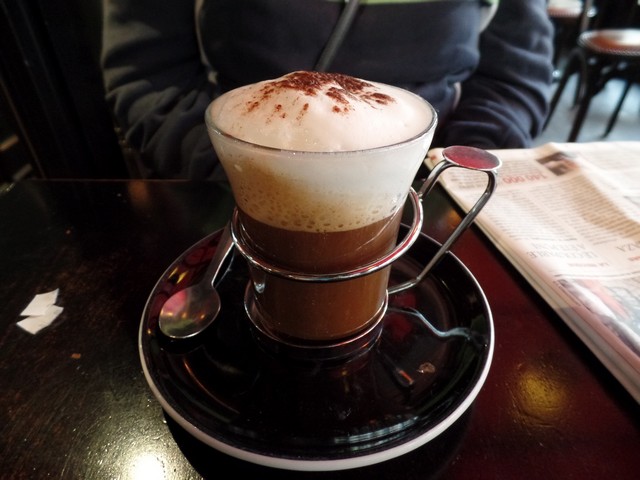
One of the things that we seem to do each time we are back in Paris is do a cooking class for lunch at Atelier des Chefs. There are multiple locations and they have this perfect lunchtime class called L'en Cas. It is a hands-on cooking class where you make a full lunch (main plus side) in 30 minutes and then you eat what you cook. We did the class with our friend, Manu. The class was really small .. just us 3 plus 4 others (all French). The ingredients were laid out but not fully prepared, so we had to do some amount of prep.
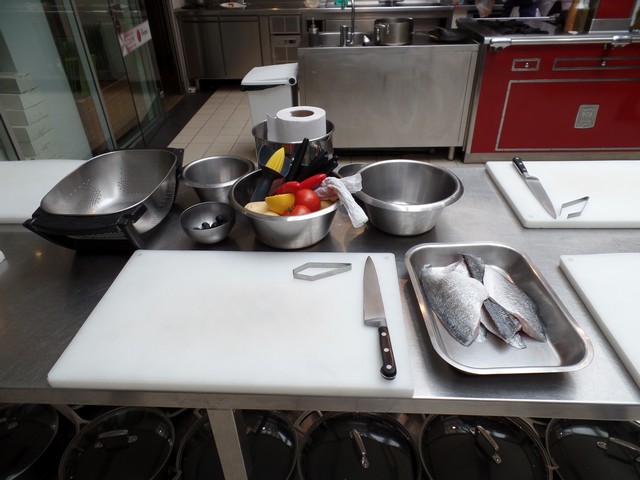
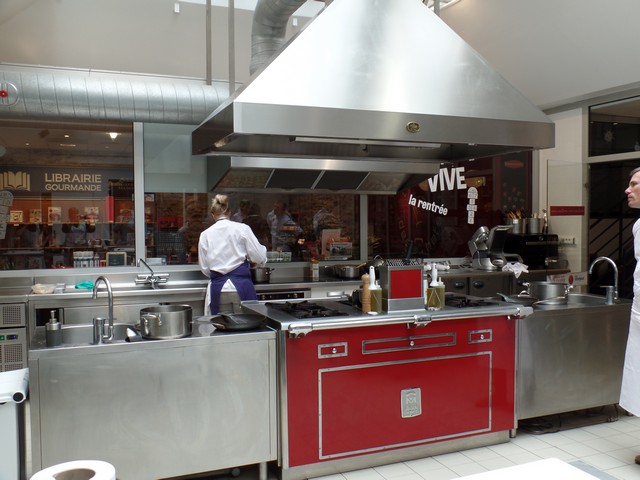
Tom lookin' snazzy in his apron!
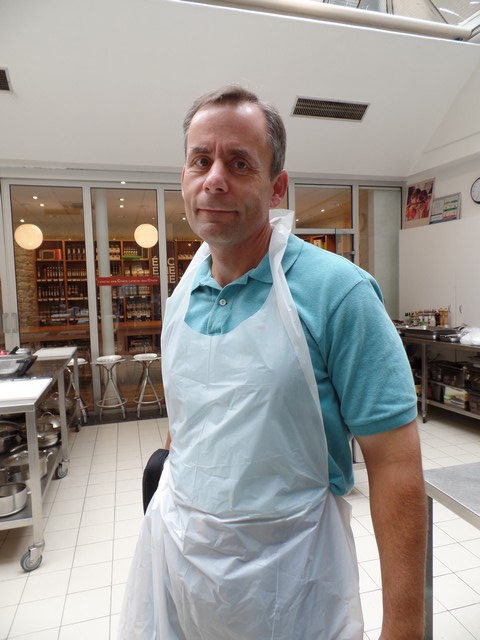
We started by cutting the potatoes (specifically, Charlotte potatoes) into small pieces. The chef gave us specific knife-techniques for cutting, keeping the blade on the cutting board at all times and pulling the knife towards you. Then you rinse them in cold water. We put it in a pan of cold water (cold water so that you don't "shock" the potatoes) and add salt. Then cover and bring up the heat. He mentioned that you put salt in now so that it goes into the potatoes as they cook.
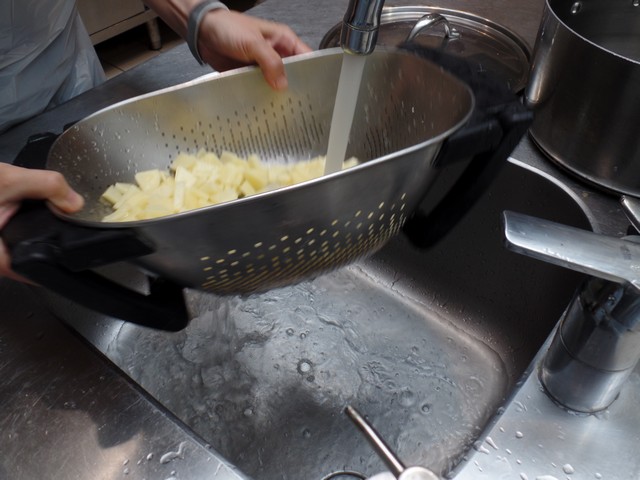
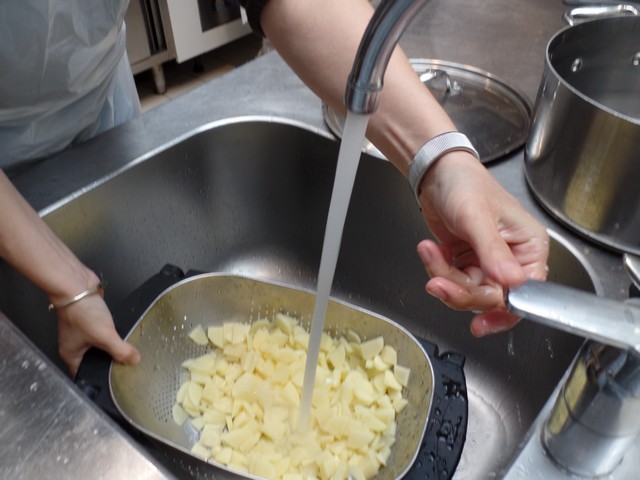
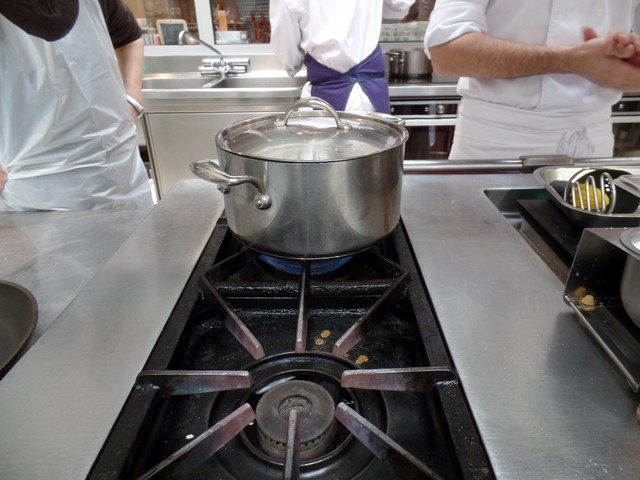
Next was fish .. this is Daurade, which is Sea Bream (not really a fish we get here locally at our Harris Teeter). They had already filleted it, but we still had to do a few things. You take off one little white piece which is the belly (if I understood his french properly) and then we had to take out the pin-bones. The knife on the second picture was to show how far down the bones would go .. below the knife there would be no bones.
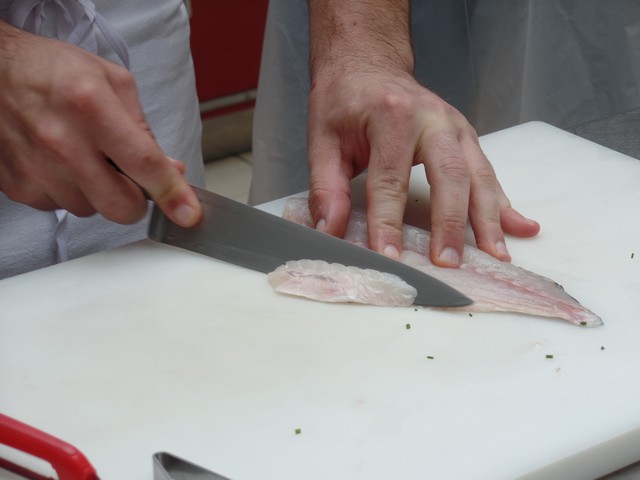
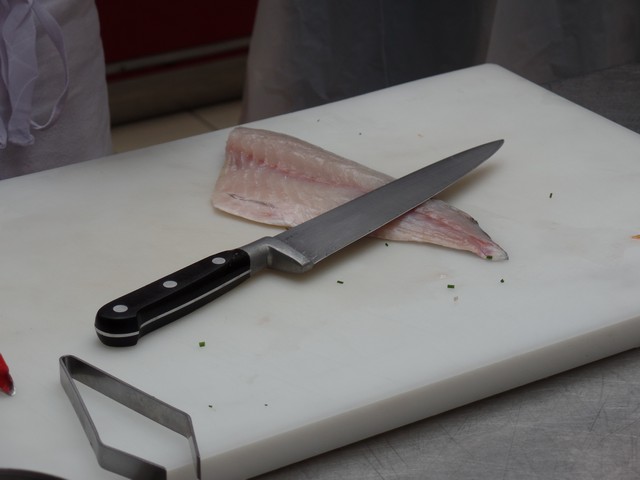
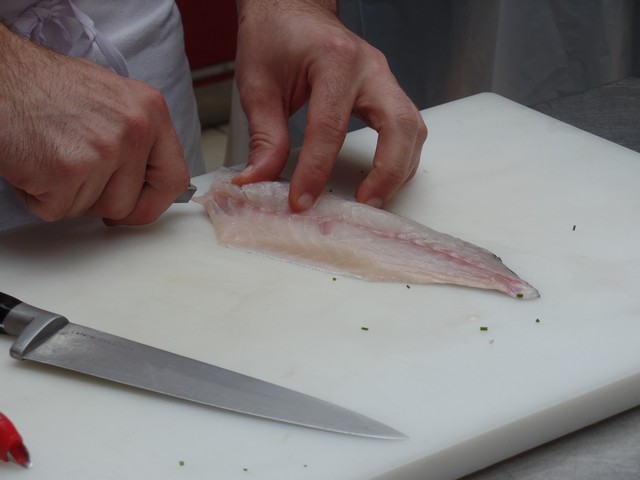
Then add oil to the pan and heat it just until you get white smoke (he joked if you get black smoke, it ruins the fish!) Then you add the fish skin-side down and sprinkle the top with salt and piment d'espelette, which is a ground red pepper (espelette pepper) which comes from an area in the French Pyrenees. Once you start seeing the outer edge of the fish become white, you flip it.
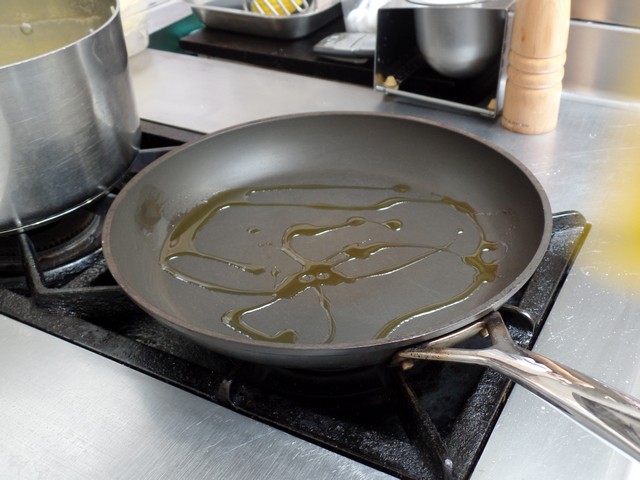
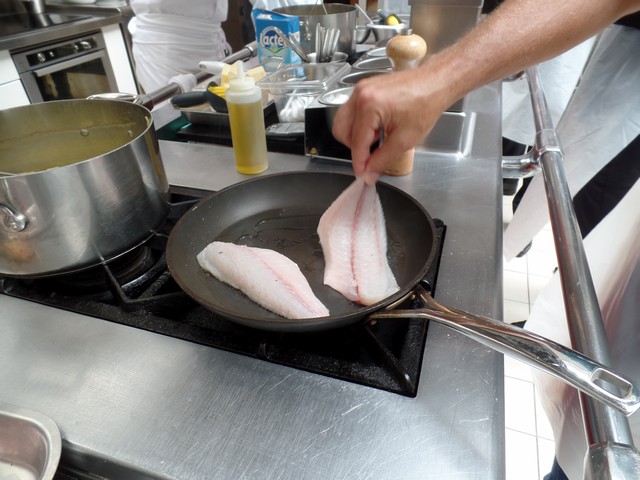
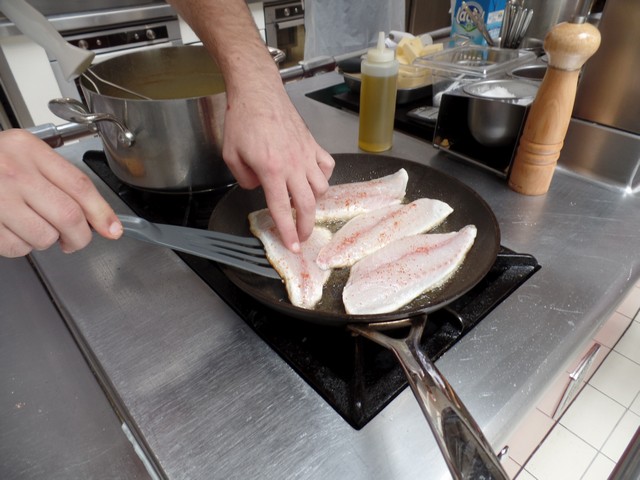
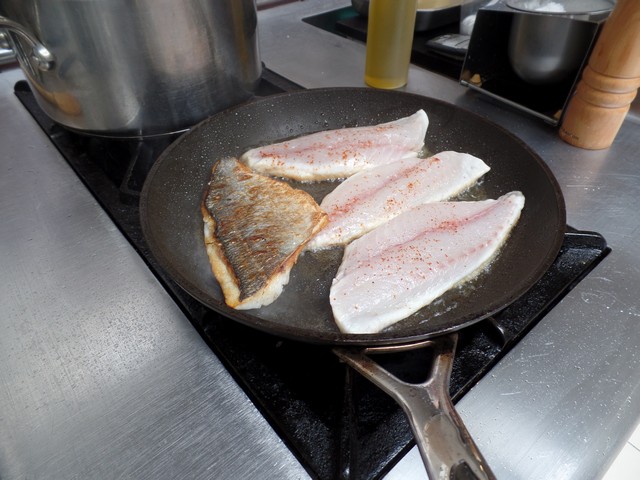
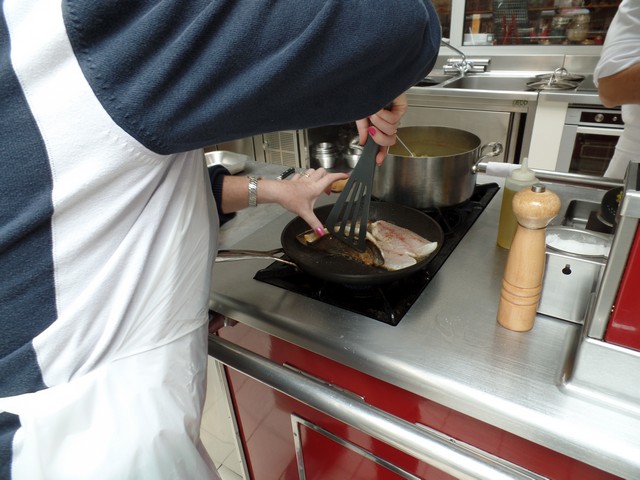
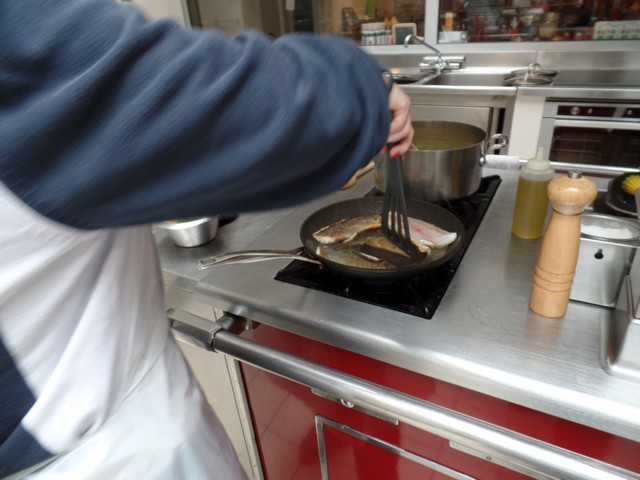
While the fish finish cooking, Tom finished off the potatoes, by draining and then mashing with milk and butter. Then chopped chives are added.
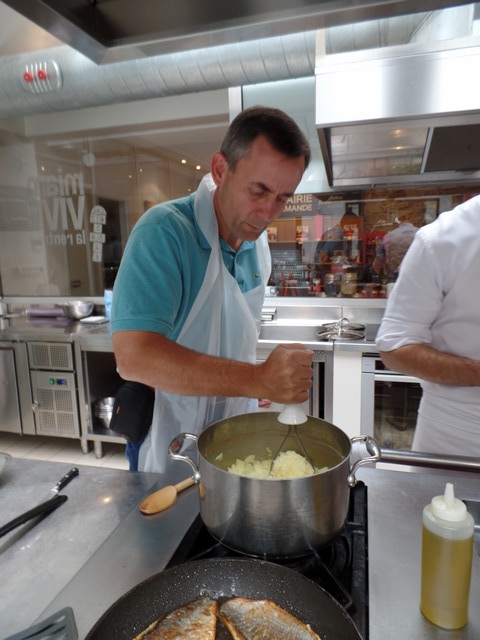
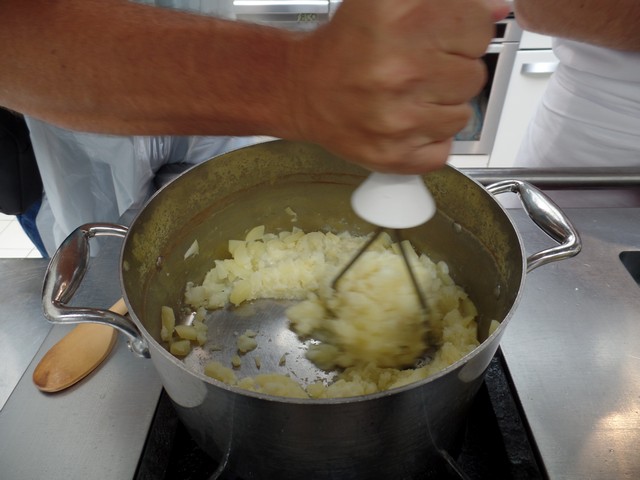
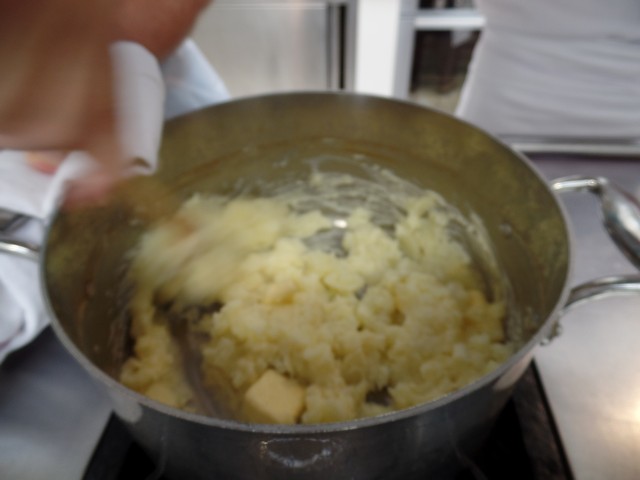
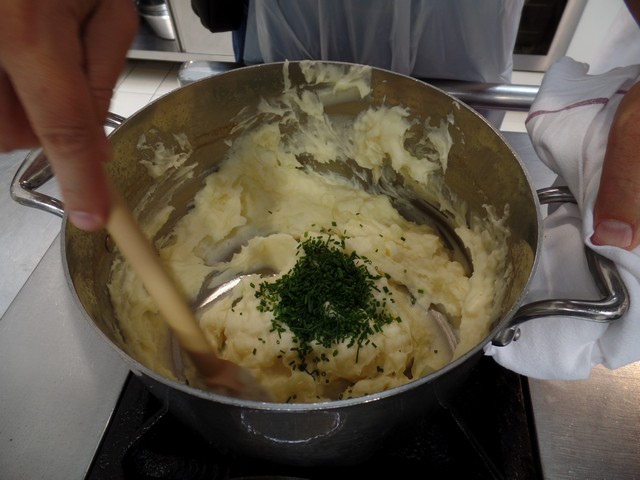
The tapenade was made from chopped tomatoes (peel them, then remove the seeds so that you only get the meat, and then dice), chopped black olives, fresh basil (in strips, as the chef said ... cut "tranquilly"). Then add the juice of 1/2 a lemon and some olive oil.
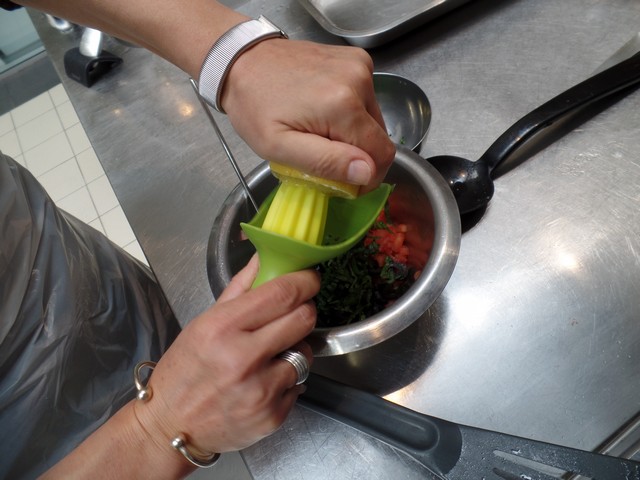
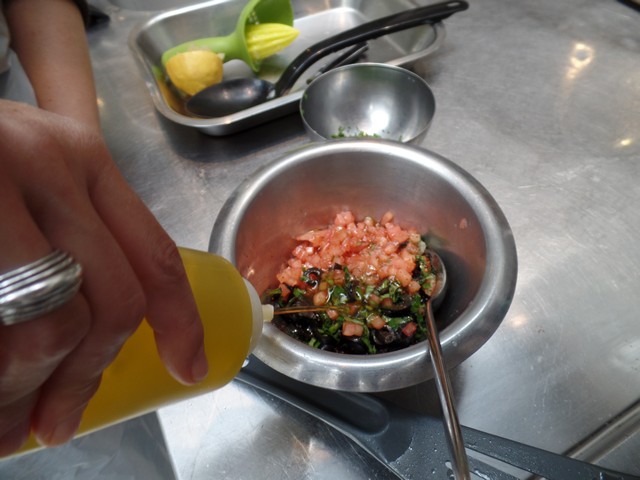
Now the plating! Take a ring mold and add the mashed potatoes, then lay the fish on 1/2 of the potatoes, skin side up. Add the tapenade on the fish and drizzle the plate with a bit of the olive oil (and maybe a bit more of the tapenade). Et Voila!!
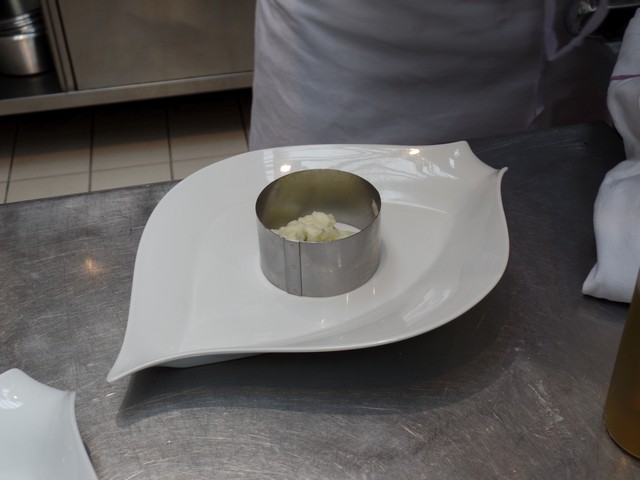
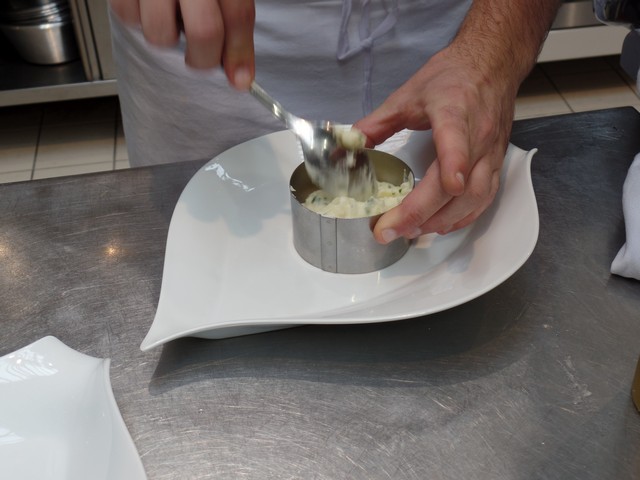
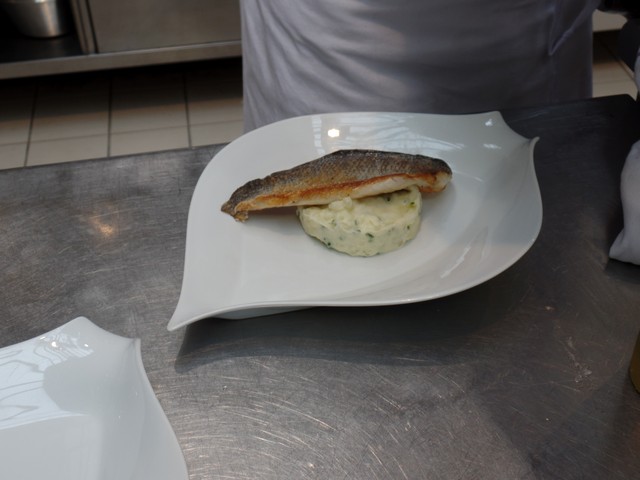
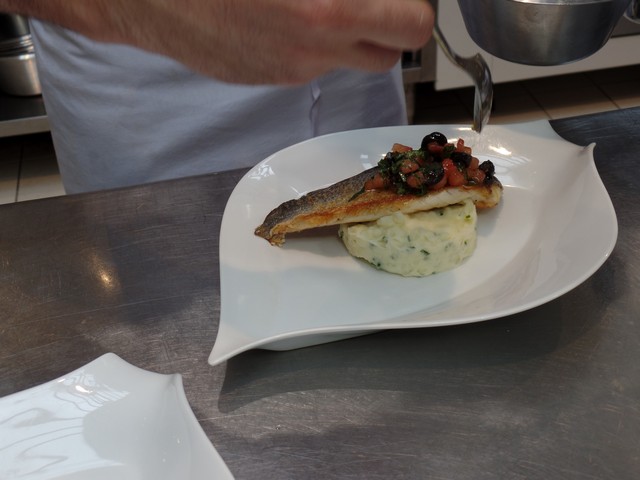
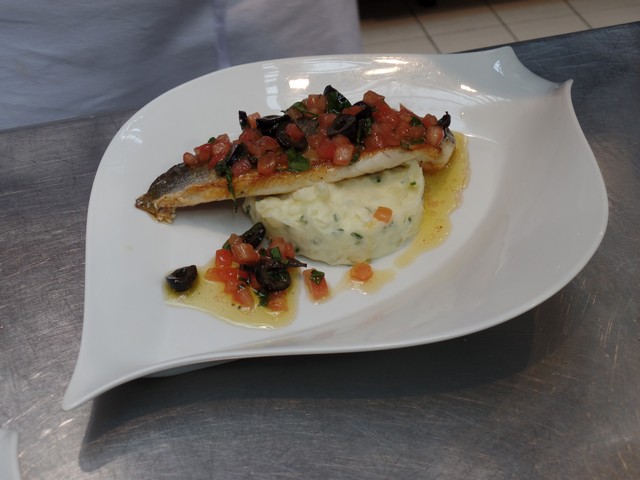
This building is the home of the Academie Francais (known in English as the French Academy). This French council handles all matters pertaining to the French language. The Academie was officially established in 1635 by Cardinal Richelieu, the chief minister to King Louis XIII. It was stopped in 1793 during the French Revolution, it was restored as a division of the Institut de France in 1803 by Napoleon Bonaparte.
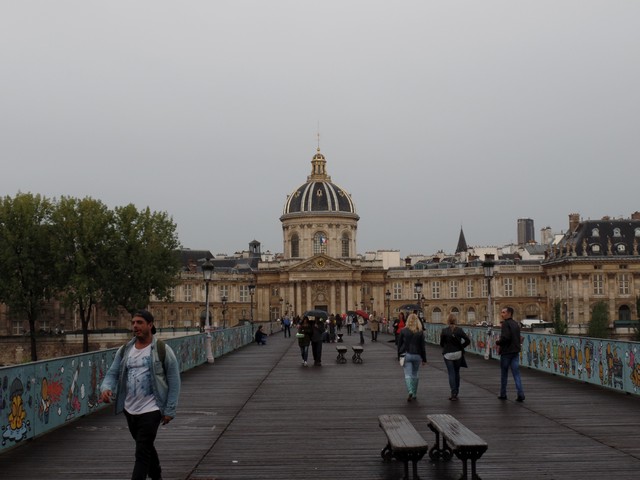
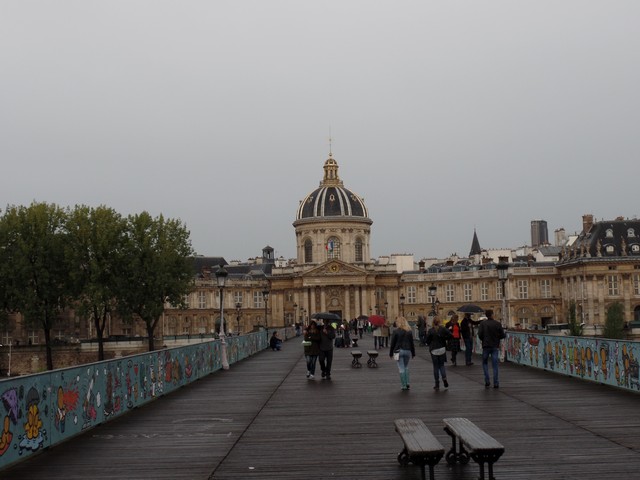
And just a view of the Ile Saint Louis.

Our last dinner for this trip was at a bistrot called Le Pantruche. It has been written up in a variety of sites (Lonely Planet, Patricia Wells, Paris by Mouth, New York Times). It is more of a "meat" place and the food tends to be bolder and heartier.
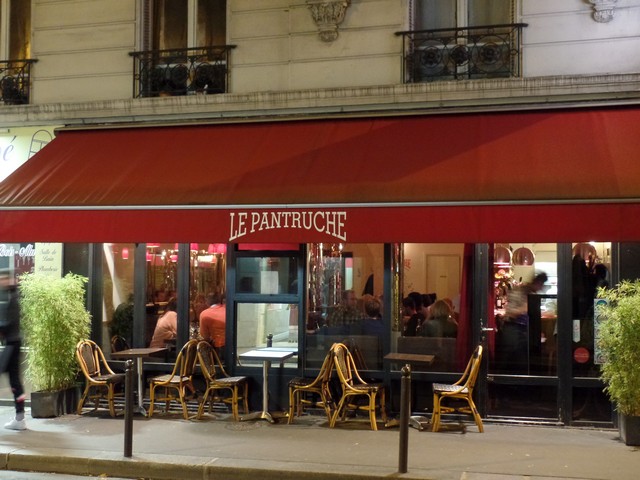
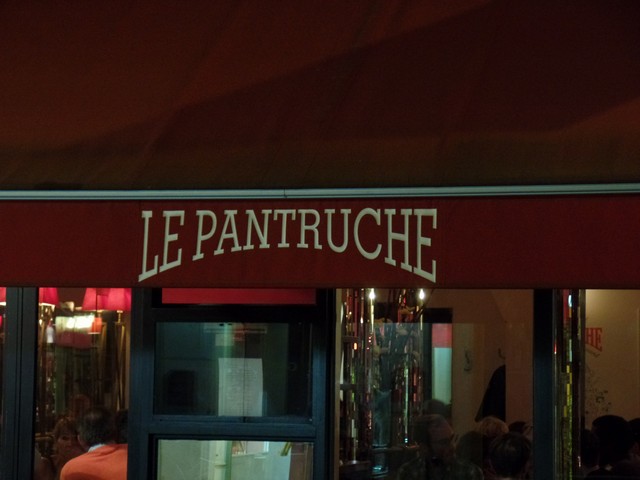
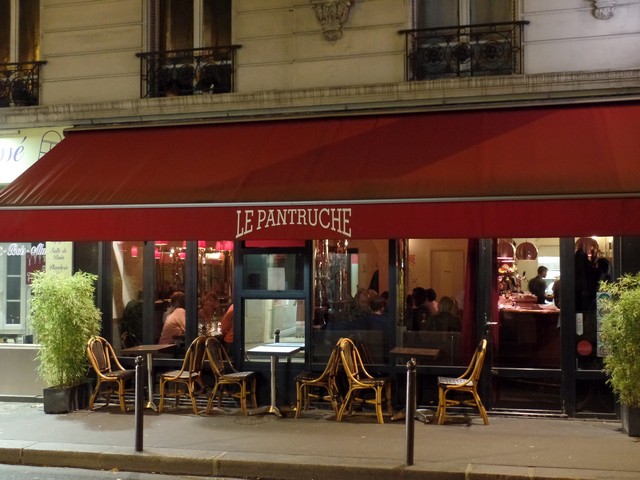
The interior was a little interesting, with these gold, shiny covered columns. There were two eating areas although they were open to each other. From our table along the back wall, you could get a view of the bar. The back wall had the normal banquette with several tables very close together (they pull the whole table out to let sit down, and they you are basically there for the evening!
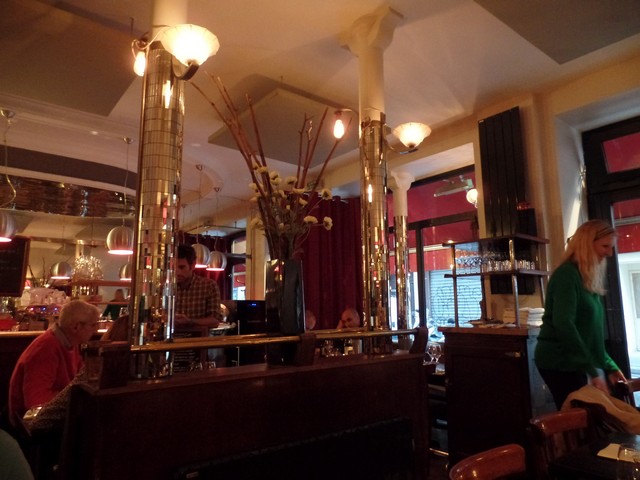
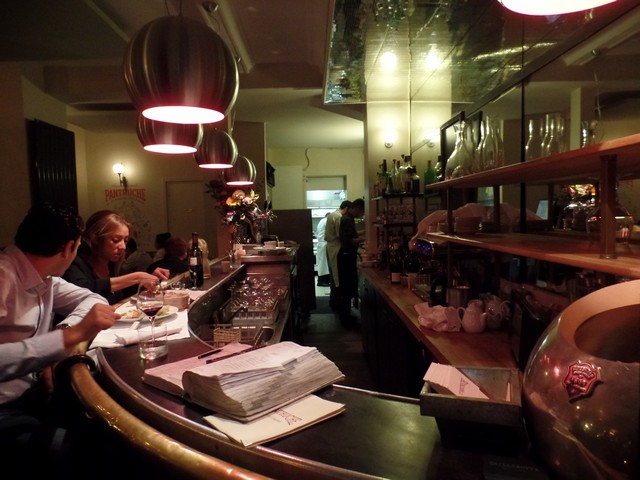
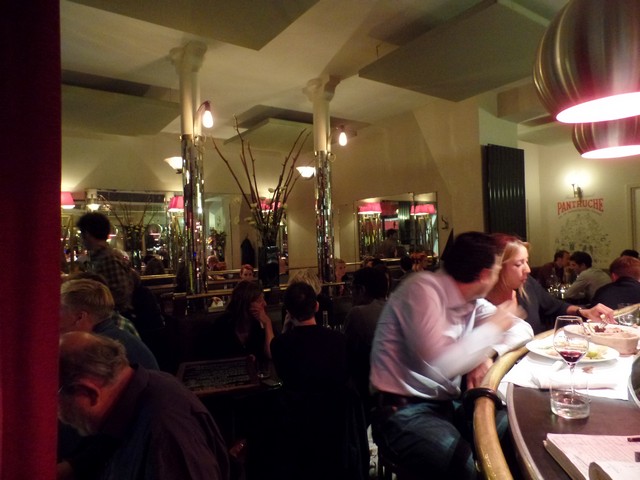
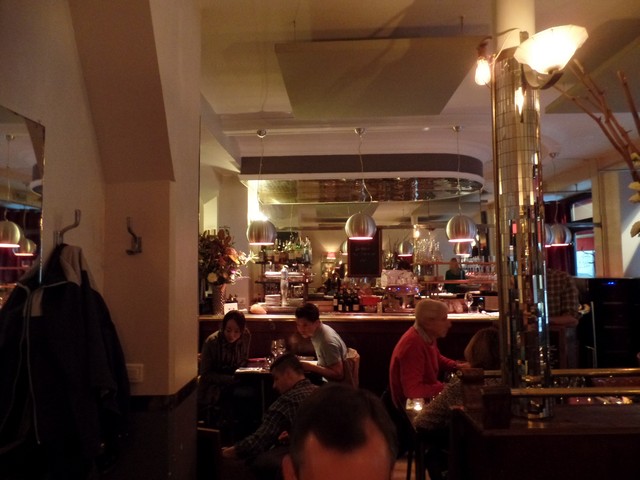
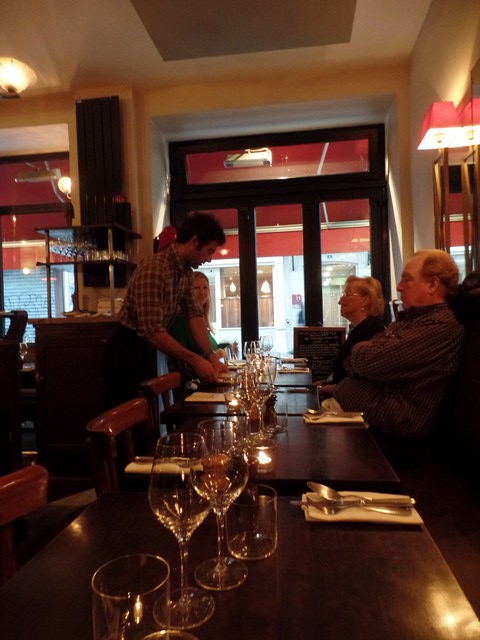
The menu was on ardoise, or chalkboard. We were reading the menu and the gentleman next to us said that he could help us if we had any questions, but he said that our French was quite good. There were a few things we had problems with but it was more that we had problems reading the actual words (not what the words meant). He said "yea, me too" so I felt a bit better.
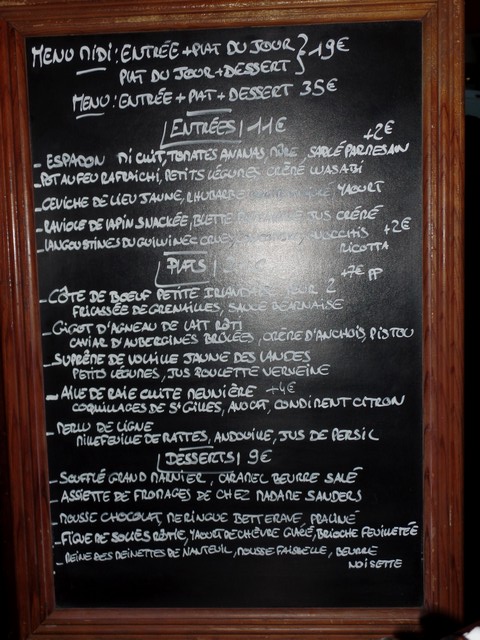
The bread came in a little linen sack. Interesting thing that we noticed is that the majority of the restaurants did not serve baguettes, but different types of bread. This seemed different to us than what we remember from when we lived there.
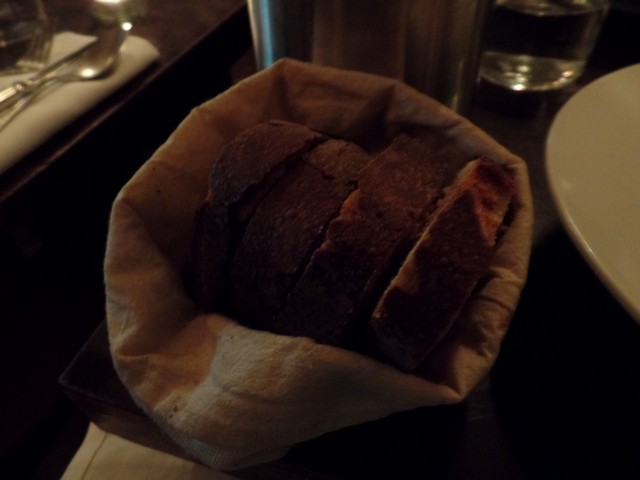
For the starters, we got the Pot au Feu (literally, pot of fire) with veggies and a wasabi cream, and then a langoustine ceviche with cucumber, gnocchi and ricotta.
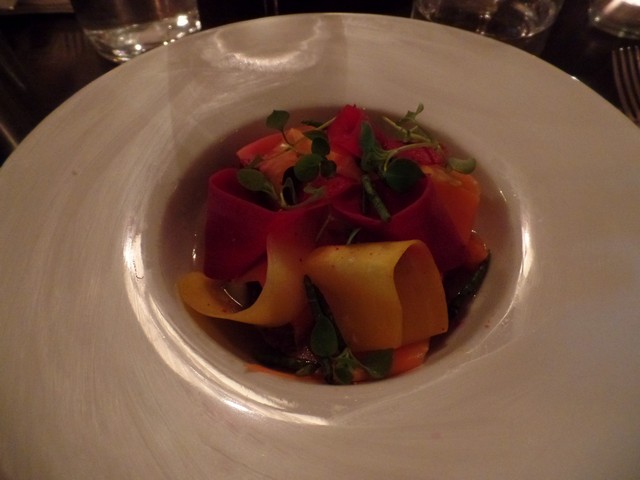
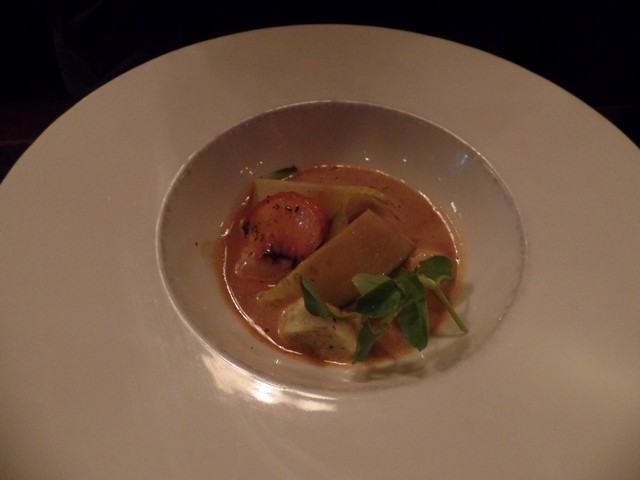
For the main courses, one was the Merlu de Ligne (a fish called a Hake, which is like cod or haddock) with thinly sliced Ratte, which is a French variety of potato with a parsley sauce. Second was a chicken dish, called a supreme de volaille. The term "supreme" indicates that it is the breast of chicken with the wing bone attached. It came with vegetables (steamed potatoes) and a verbena sauce.
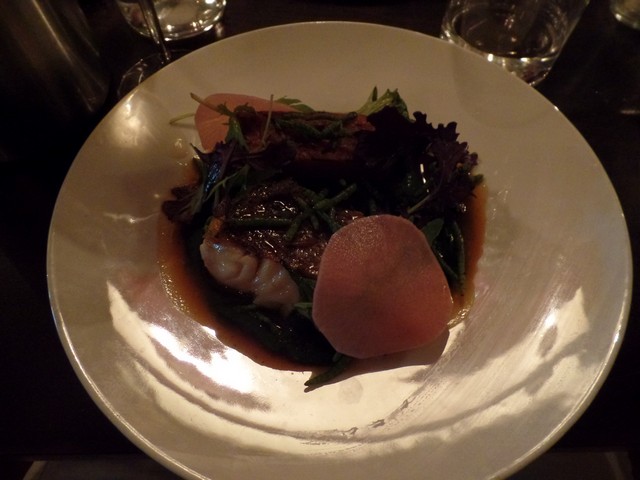
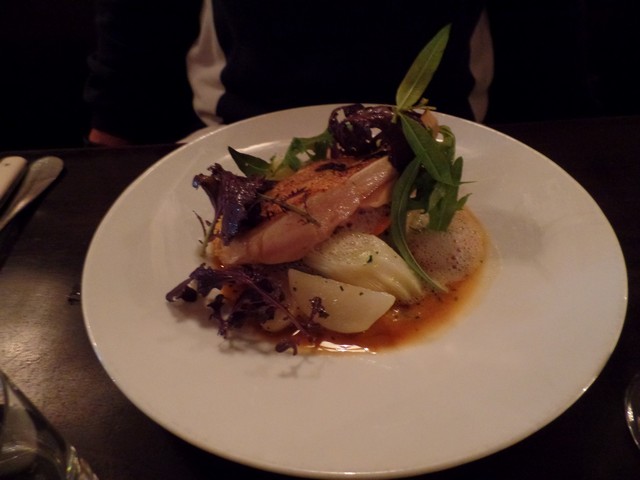
And of course, we had dessert ... This first one was one of the translation issues ... Reine de Reinettes ... reine is queen in French, so we were like ... queen of queenettes? It is actually a type of apple called King of the Pippins (how they got King from Reine is beyond me!). It is an old type of French apple, also known as Golden Winter Pearmain because it ripens late in the fall. So this was apple with a mousse. I went all out for my final dessert ... Grand Marnier Souffle with a salted caramel butter sauce
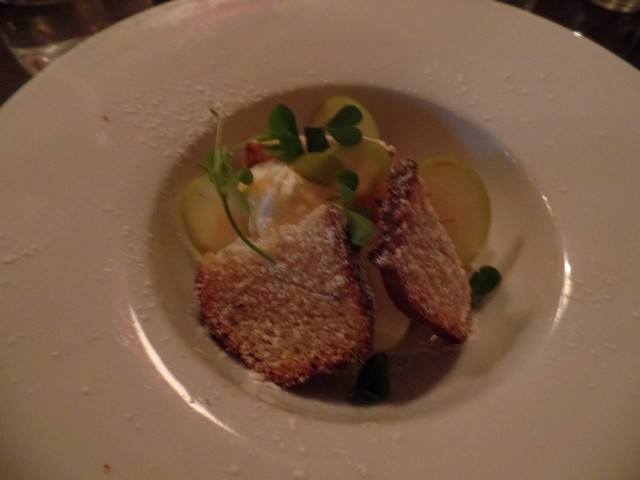
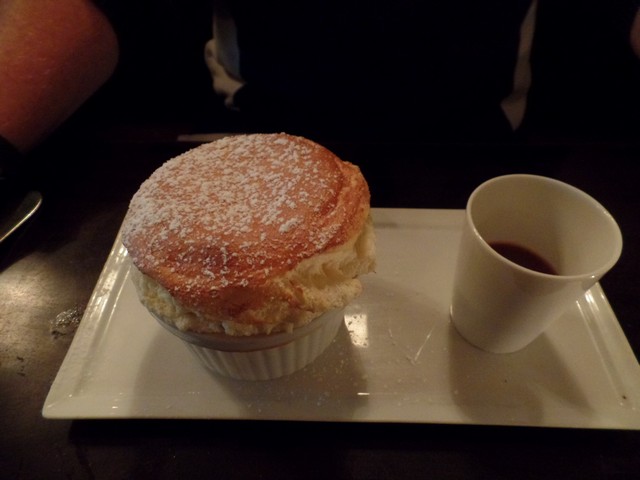
And with that ... our 2015 Paris vacation was over. We headed back early the next morning.